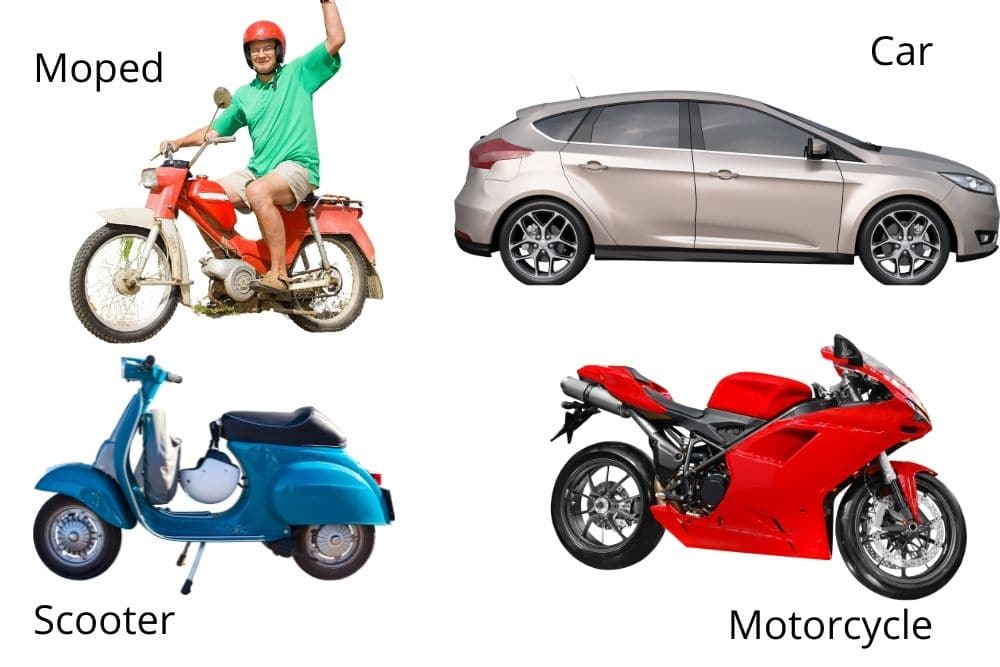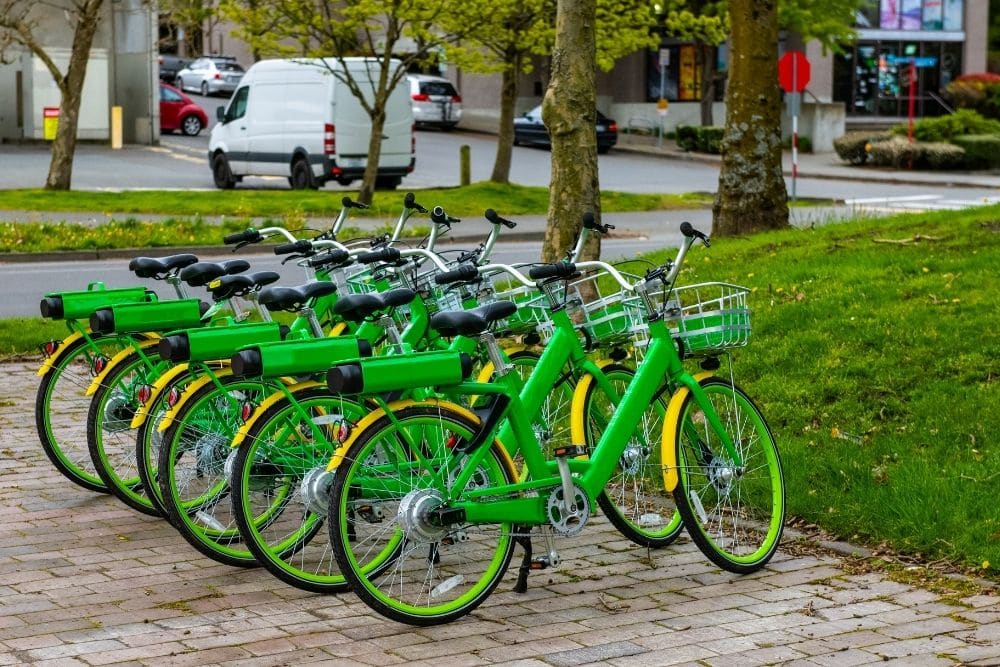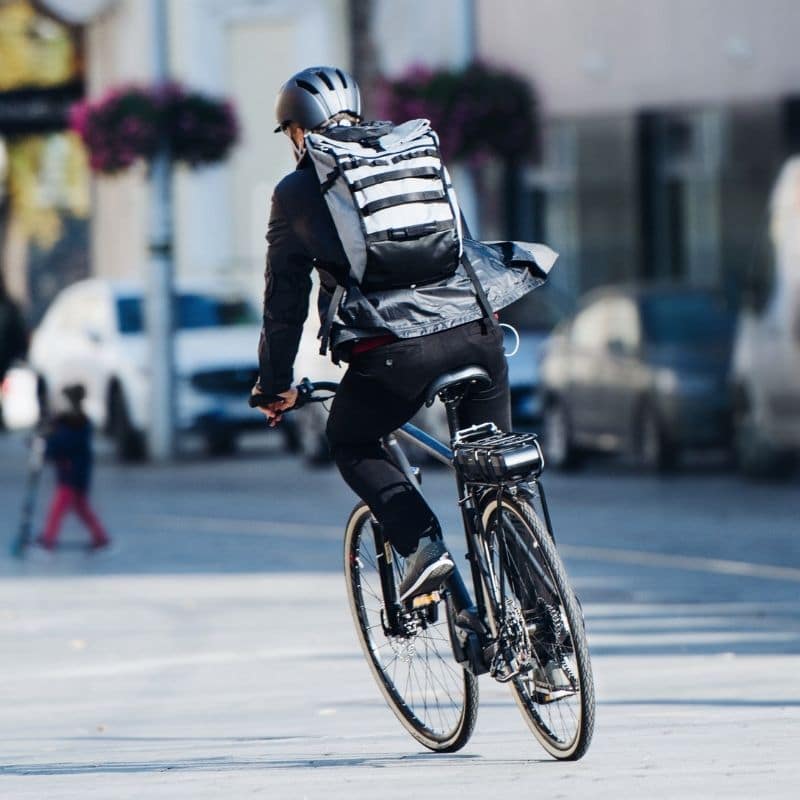Ebikes are much more common today than they were just a decade ago. They are superior now to regular bicycles, cars, or scooters and mopeds, or motorcycles for transportation. Individuals and businesses are relying more and more on ebikes. They are environmentally friendly and easy to operate. They are cheap to purchase, compared to the other options, and there is far less legislation to deal with operating an ebike.
Compared to cars, ebikes are light and cheap machines that you can take anywhere. People can save money by going with an ebike instead of a car. They can get you all over your city without tiring you out. You can pedal at a low assist mode when it is easy to move around that way, and turn the assist mode higher to boost the motor when you go up hills. Cars give better protection from the elements, but it can be difficult and expensive negotiating a car trip around a city, and finding a place to park can be a nightmare.
Many ebikes look just the same as regular bicycles, and other people might not notice that your bike has a motor right away. You can alternate back and forth between pedal and battery power with an ebike. Modern lithium-ion batteries are powerful enough to give an ebike a long range, and you can rely on pedal power when the batteries run flat.
Ebikes, Mopeds, Scooters, and Motorcycles: The Differences
Unlike ebikes, scooters do not have pedals. They are very low to the ground and are not shaped remotely like motorbikes. They have small engines, which can be gas or electric. Their gas engines usually range from 50cc to 250cc, with the larger engines being comparable to smaller motorbike engines.
The shape, rather than the engine size, determines whether a bike is a scooter or a motorbike. The step-through chassis makes a scooter look and feel very different from a motorcycle. Some exceptional scooters have powerful 850cc engines, larger than some motorbikes engines. These are still scooters though, because the shape of the bike is so different from a motorcycle.
Scooters are easy to ride. Since they are low to the ground, it is very easy to keep your balance, and they are very maneuverable. Scooters are powerful enough to commute daily for trips to and from work. They are cheaper to run than a car, but far more expensive than an ebike. The minimum age to ride a scooter varies country to country, and a license is usually required, so check the legislation where you reside to ensure you keep to the law.

Mopeds have smaller engines than scooters do, and are not quick enough to travel on fast highways. The small engine is usually under 50cc; though some do have larger engines. You don’t have to rely entirely on the engine. Instead, you can also pedal and use the engine at the same time. This can be difficult on a moped though, without getting tired.
Motorbikes are the oldest, fastest, most expensive, and most powerful of these vehicles. Motorcycles use big, powerful engines, sometimes well over 1000cc. Even a motorbike with a relatively weak engine can still keep up with traffic on fast highways.
Unlike motorcycles/scooters/mopeds, ebikes look like bicycles. Riding an ebike feels like riding a bicycle, but you have the assistance of a battery-powered motor as well.
Ebikes are for situations where a regular bike would work, but it would be too tiring to ride it around all day. It is much easier to ride a lot of miles each day with an electric bicycle if you have the motor’s assistance.
If an ebike meets certain requirements regarding weight and maximum speed, there may be few or no legal restrictions that apply to them. Even helmets are not a legal requirement everywhere, though it would be advisable to wear one in traffic. Mostly, the law treats ebikes as traditional bicycles, or almost as tolerantly.
See also: Emoped or Ebike, Which Should You Get?
And: Who Benefits with an Ebike?

Ebikes Vs Electric Mopeds
While scooters have reasonably powerful engines, mopeds do not. Moped engines are small, even though they can be gas-powered or electric. Mopeds often have pedals (the term moped comes from motor pedal). This makes mopeds comparable to ebikes, which also have relatively weak motors and rely on pedal power.
Don’t confuse mopeds with scooters. Mopeds are slower and less powerful. Also, while some mopeds include pedals, many others do not. Mopeds are less likely to include pedals than they used to, though you can still easily find mopeds with pedals fitted.
Neither mopeds nor ebikes are usable on fast highways – they just aren’t anywhere near powerful enough to keep up with highway traffic. However, they are good for travel within a city. They are light, fuel-efficient, partly muscle-powered transportation, that works if you don’t need to travel too fast or too far.
A lot of the time, ebikes let you select how much power the motor provides by setting the assist level. If you want to exercise to get in shape, you can leave the motor off, or at a low power setting, most of the time, but turn it on if you reach a hill, or get tired and still have a way to go.
With an electric bike, you usually have to pedal to get the motor assistance. You cannot rely only on the motor, though some ebikes have throttles. Mopeds do not require pedaling – even if they have pedals fitted, you can use the motor exclusively.
One disadvantage of mopeds is that they have age restrictions. You usually have to be a certain age to ride a moped. Electric bikes often have no age restrictions. Mopeds usually have to be registered, and you may need a license. The laws vary in different places, so check wherever you reside.
Electric bikes are also lighter. Averaging around 45 or 50 pounds (18 to 22kg), compared to a possible 180 pounds (80kg), for a moped. An ebike can be carried up or down stairs if necessary. Mopeds have more powerful motors, and different, much heavier frames. It would be near impossible to carry a moped anywhere if required.
Conclusion
We have looked at some of the differences between cars, mopeds, motorcycles and scooters, compared to ebikes. If we are looking at cost implications first, then it is obvious that an ebike will win hands down. Cheaper to buy, run, and maintain, and very little in the way of legislation to deal with. No license required, no compulsory insurance, means, apart from some age restrictions in some places, almost anyone can buy and use an ebike. Ebikes can be used on cycle paths as well as roads. They can be carried up and down stairs if you happen to live in an upper apartment, and there are also versions available with folding frames that make their portability even easier.
Cars are the most expensive, they require fuel, a license, insurance, and perhaps a range of other taxes depending on where you reside. Maintaining a car is expensive. They can be slow moving in heavy traffic and costly to park when you can find a place to do so.
Scooters, mopeds, and motorcycles also require fuel, and even the electric versions will cost far more to use than an ebike. Scooters and mopeds, and motorcycles, like cars, usually need to be registered and the user will need a license, insurance and whatever other legislation and taxes a country may require. They also cost more in maintenance to keep in good operating condition. They also are limited to use on roads, whereas an ebike can use cycle paths as well as roads.
Having looked at some of the alternatives, it is easy to see, that for cost effectiveness, environmental considerations, and ease of owning, using and complying to legislation, the ebike is a clear winner.
As technology advances and batteries become lighter, more efficient, and powerful, then the everyday range of an ebike will increase, and that will make them an even more desirable prospect.
13 Nov 2021

